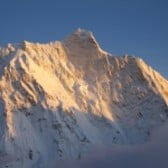
Daily Mountain
48 years, Australia
Open, Opening or Closed: Adventure Destinations in the Summer of COVID
This article first appeared on http://explorersweb.com. The original can be read here.
by Martin Walsh
Countries around the globe are at very different stages in the fight against COVID-19. Some hope that they have reached the peak, others are taking their first cautious steps out of lockdown and a few are girding up for a second wave. Will we see any expeditions before 2021?

Open
Pakistan
Technically, Pakistan is open to tourists. The government has announced that it will open to international flights this week. Pakistan is keen to revive a flagging economy and salvage something of the Karakorum summer, but as we recently covered, hope for a summer climbing season is nevertheless fading fast. The sharp rise in domestic cases should keep Pakistan’s “open” status theoretical for now.
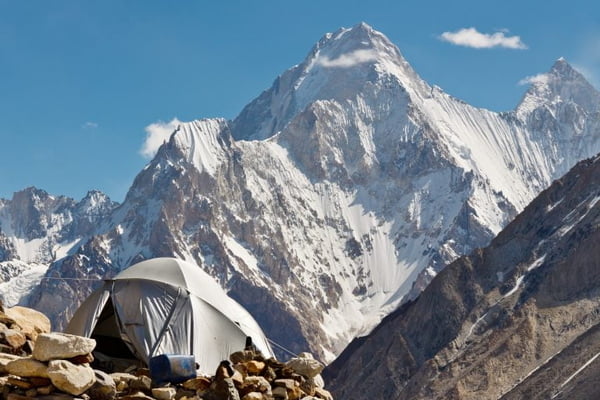 A camp in the Karakorum, Pakistan, with a view of Gasherbrum IV.
A camp in the Karakorum, Pakistan, with a view of Gasherbrum IV.
Nepal
Nepal’s Department for Immigration (DOI) resumed services on June 15. However, regular international flights remain suspended until at least July 6. The DOI stated that only non-tourist visas (for example, marriage and business visas) would be processed until June 18, but no further announcements about the resumption of tourist visas have come since the last update on June 16. Like Pakistan, Nepal seems eager to welcome tourists as soon as possible, but may find its hands tied.
A nationwide lockdown has eased, though some businesses, such as cinemas and shopping malls, remain closed. Easing restrictions looks risky, as the Kathmandu Post reported a record 586 new cases on June 17, suggesting that the official tally (8,274 cases and only 22 COVID deaths at the time of writing) could climb quickly. So many people, tired of the lockdown, have flocked to the streets since June 15 that the government announced a night curfew for all 77 districts on June 19.
East Africa
On June 8, President John Magufuli declared Tanzania COVID free. Tanzania’s high season for tourists usually runs from July until October, but the country is expecting a 76 percent decrease in tourists for 2020. The country has allowed international flights since May 18 and does not require visitors to quarantine on arrival, but there are temperature checks at the airport, park gates and hotels.
Kilimanjaro is open, and operators are advertising tours, though with some caveats. They warn that international flights may be cancelled due a to lack of passengers and that safety precautions, including face masks, are required in public places and in vehicles.
In Kenya, the suspension of international flights was extended for 30 days on June 6. Mount Kenya, therefore, remains closed. But it has been spotted from Nairobi!
Opening Up
United States
Long a leader in so many ways, the U.S. is now sadly leading the world in the number of COVID-19 cases, yet some states are reopening. For example, Washington State has entered phase two of its Safe Start program, which will allow U.S.-based climbers to return to Mt. Baker. Madison Mountaineering is leading expeditions to the mountain as early as mid-July. (Interestingly, Madison Mountaineering is also taking bookings for Antarctica’s Mount Vinson with December 2020 start dates –- wishful thinking or a realistic target is hard to say).
National parks across the country are reopening in a phased approach. You can find out if a specific park is open through the National Park Service website.
Alaska does not currently limit business operations, restrict movement or large gatherings. According to the government website, “In-state travel is allowed for all purposes. However, local communities may enact their own requirements and rules for travelers. Always check borough and city orders before departing on travel.”
At present, the U.S. remains closed to international visitors, with no immediate plans to reopen.
Canada
Like the U.S., restrictions in Canada differ from province to province. The Maritime provinces have set up border checkpoints to limit movement, while in others, inter-province movement is unrestricted (though sometimes discouraged) and stores, restaurants, hotels, etc. have reopened, with hygenic and social distancing adaptations.
Parks Canada has announced that from June 22, camping services will resume at “select parks”, but only for those with existing reservations.
Some parks, including Banff, are already open, while others, such as Gwaii Haanas, remain closed and noncommittal about the immediate future. Parks further north, in the Yukon, Northwest Territories and Nunavut, remain firmly closed. Some, such as Auyuittuq in Nunavut, will remain closed until at least August 31, by which time winter is in the air. Entering the park before then could net you a fine of up to $100,000!
How about heading into the Canadian Arctic outside of national parks? Well, you’ll need time and cash. It’s mandatory for those flying into Nunavut to get a COVID test first and then to self-isolate for 14-days in one of four government-appointed hotels. Hotels in these remote Nunavut hamlets often cost $400 a night, so you can expect a hefty bill even before you set out on your expedition.
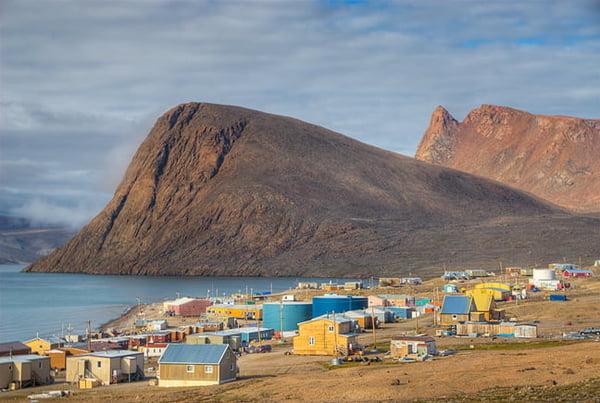 Grise Fiord, Nunavut, Canada’s northernmost community. Photo: Jerry Kobalenko
Grise Fiord, Nunavut, Canada’s northernmost community. Photo: Jerry Kobalenko
New Zealand
Before three new cases were confirmed this week, New Zealand had declared the virus locally eradicated. All three of these new cases involved individuals returning from abroad (two from the UK and one from Pakistan). The government is hopeful that their track-and-trace protocols will halt any wider spread.
The country has largely returned to normal. Businesses, schools and even ski resorts have reopened. A few international flights have also resumed, but these primarily allow stranded nationals to return home. Those arriving in the country are likely to undergo a 14-day quarantine for the foreseeable future.
There have been discussions regarding a Trans-Tasman bubble to reopen quarantine-free travel between New Zealand and Australia. However, recent comments by Australian tourism minister Simon Birmingham have muddied the waters. Birmingham has stated that Australia’s border would likely be locked down until 2021. Meanwhile, Australian foreign affairs minister Winston Peters assured the public that the Trans-Tasman bubble concept had not been jeopardized by a recent border bungle involving two active COVID cases, and could be easily established. Suggestions that COVID-free Pacific nations might join the bubble also remain up in the air.
Japan
Japan has counted 17,628 confirmed COVID cases as of June 17 but its daily new cases peaked way back in mid-April. Lockdown never really happened in Japan. Instead, an emergency declaration “strongly requested” everyone to reduce social contact. Further incentivizing a semi-lockdown, businesses that were deemed non-compliant were named and shamed. This declaration was lifted on May 25, and social pressure on citizens to avoid inter-prefectural travel was likewise lifted shortly afterwards.
The situation about outdoor pursuits remains ambiguous. Mt. Fuji is officially closed; the trails will not be cleared and mountain huts are not manned. There will even be an official stationed at the trailhead advising would-be hikers to turn back. Mountain huts elsewhere in the country have followed suit, although some plan to reopen in July, midway through the season. The big question is what this means for rescue services. Most Japanese hikers will obediently refrain from traveling in the backcountry until the government makes it clear that normalcy has returned.
Some international flights to Tokyo have resumed, but a 14-day quarantine is in effect for all visitors.
The European Union
COVID infection rates are finally falling across most of Europe, and lockdown rules are easing.
The EU plans to fully reopen internal borders by the end of June and to reopen their external borders in July. Italy, hit hard early in the pandemic but economically reliant on tourism, was one of the first to countries reopen. The map below shows the situation for EU citizens as of June 17.
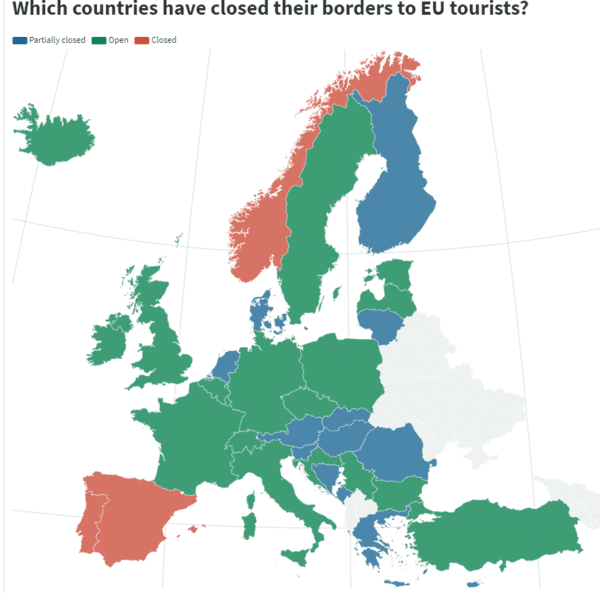 Most of Europe has at least partially reopened. Photo: Euronews
Most of Europe has at least partially reopened. Photo: Euronews
Spain, currently closed, will lift their national State of Alarm today, June 22, and open to EU nationals.
Now that the majority of internal borders are open, most EU nationals can head to the Alps. The International Mountaineering and Climbing Federation (UIAA) have released some general COVID recommendations. These include keeping two metres apart, using a mask if around others and “staying well below [your] personal performance limit.”
United Kingdom
Recently separated from the EU, the UK is battling the worst COVID outbreak in Europe. British nationals will likely face restrictions when traveling in the EU, even after external borders reopen in July.
Within the UK, a strict lockdown has eased slightly. The rules are quite convoluted, but outdoor pursuits are back, as long as you don’t stay out overnight or take unnecessary risks that could put rescue services in harm’s way. You must also stay in small groups, no larger than six.
Travel outside the UK is beginning to look more realistic, though the government still advises against all but essential travel, and the rest of the world would eye British holidaymakers suspiciously. Spain has announced that it will accept UK tourists from June 21, without the need for quarantine. The decision was made “out of respect” for the 400,000 Britons with homes in Spain. Though prospective visitors can avoid quarantine in Spain, they would currently still be subject to a 14-day self-isolation on their return to the UK.
Russia
Russia has the third most confirmed COVID cases in the world: over 575,000 cases at the time of writing. New daily cases have fallen to their lowest levels since early May, but the figures remain very high: 7,889 new cases were logged on June 20.
In Moscow, a two-month lockdown was relaxed on June 8. This included an end to compulsory travel passes within the capital. Individual regions set their own rules about the movement of people and isolation requirements, so travel within the country is still extremely limited. However, a national vote will take place on July 1, and it appears that most regions will relax their restrictions in advance of this.
The government imposed “temporary restrictions” on entry and exit at all land borders from March 30, with no word on when these restrictions will lift. However, it is still possible to fly into the country, as long as you don’t mind spending 14 days in quarantine on arrival. Best to hold off on any plans to climb Mount Elbrus for now.
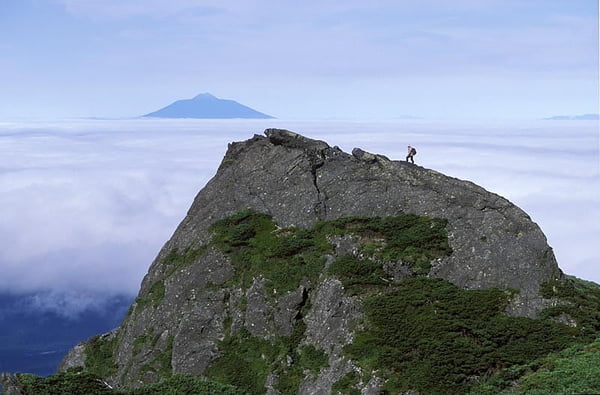 Most of Europe has at least partially reopened. Photo: Euronews
Most of Europe has at least partially reopened. Photo: Euronews
Closed
Antarctica
Geographically disconnected, Antarctica’s isolation (and strict security) have ensured that it is the only continent with no confirmed COVID cases. Luck played a major role too, since the pandemic only emerged at the end of the Antarctic tourist season. An Australian cruise ship due to arrive in early March was turned around when COVID cases were found on board. Nearly 60 percent of those on board eventually tested positive for the virus.
Antarctica is now closed to tourism, but the continent’s research stations still operate with skeleton crews. Person-to-person contact between bases is now prohibited unless essential. Those still required to travel to Antarctica have to undergo COVID screening and a 14-day isolation period.
China
Only one expedition made it to Everest this season, the Chinese survey team tasked with remeasuring the mountain. Since then, the mountain has returned to its new normal: deserted. But could we see any further mountaineering expeditions in 2020 within China? It seems unlikely. After almost two months publicizing its success at controlling the virus, a new outbreak has just struck Beijing. Over 200 new cases have been linked to a wholesale market in the city, sparking a return to lockdown for many neighborhoods. If the outbreak can’t be controlled, lockdown restrictions will doubtless be expanded.
China remains closed to most non-citizens. Those that do manage to secure a visa will be subject to a centralized quarantine period of at least 14 days, the cost of which will be borne by the individual.
Brazil
Fancy a trip to the Amazon? Best not schedule it for this year. Brazil has banned entry to all foreign nationals (unless you are resident in Brazil, or the spouse, child or parent of a Brazilian national).
Brazil is in crisis, trailing only the US with over a million confirmed cases. At the same time, the president is calling for an end to lockdown and attacking regional governors who have introduced restrictions to control the virus. However, the death toll continues to rise, and the Amazon region has been hardest hit: The city of Manaus has the highest rate of infections per capita in the country. The further spread of the virus to remote communities in the Amazon is a particularly scary proposition. According to Al Jazeera, the virus has already spread upriver and infected indigenous communities.
Argentina / Chile
Any plans for Patagonia will also have to wait. Both Argentina and Chile prohibit entry to all non-residents. One of the first countries in the region to impose a lockdown, Argentina clamped down on internal movement on March 21 and has suspended all international flights until at least September. Recently, the measures have relaxed in some areas of the country, though Buenos Aires has extended its own restrictions until June 28.
Chile was slow to institute a lockdown but announced on Wednesday that they will be tightening COVID restrictions, particularly in the capital of Santiago. Recent reports state that “the new measures include a country-wide increase in policing, as well as penalties of up to five years in prison for violators of the quarantine or curfew.”

